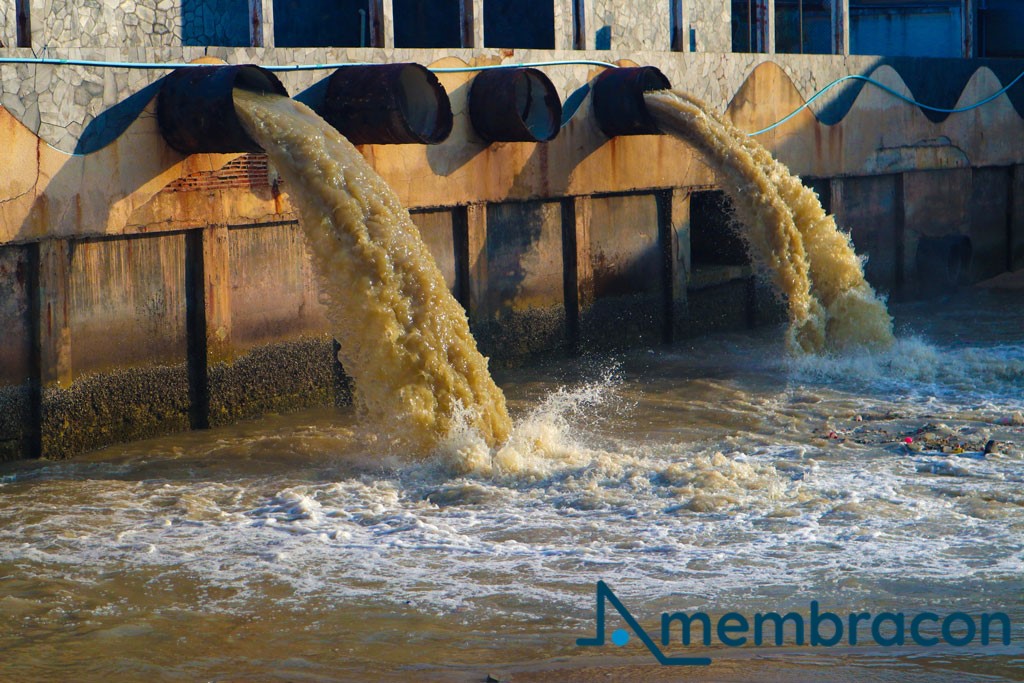Strategic Approaches to Improve Drainage Treatment Effectiveness and Decrease Environmental Effect
In the world of drainage therapy, the quest for improved performance and reduced environmental influence is a continuous difficulty that requires calculated solutions. As culture comes to grips with the necessary to handle water resources sustainably, a nuanced technique comes to be important. The integration of sophisticated treatment innovations, energy-efficient procedures, source healing approaches, enhanced nutrient elimination techniques, and smart tracking and control systems stands for a complex structure for dealing with these pressing issues. What exists at the core of this facility internet of methods is the prospective to transform the way we come close to waste water therapy, not just as a process of disposal, yet as a beneficial possibility for advancement and ecological stewardship.
Advanced Treatment Technologies
Innovative membrane layer purification systems have actually revolutionized advanced wastewater treatment procedures, dramatically boosting the elimination of contaminants. This technology has verified to be extremely efficient in getting rid of a wide variety of impurities, including drugs, heavy metals, and natural substances, which are frequently challenging to get rid of via traditional therapy techniques.
Additionally, membrane filtration systems provide various benefits over conventional therapy approaches. Additionally, these systems are extremely versatile and can be quickly incorporated right into existing treatment plants or made use of as standalone units for decentralized applications.
Energy-Efficient Processes
The integration of energy-efficient processes in wastewater therapy systems is critical for enhancing resource application and lowering operational prices. By applying energy-efficient modern technologies, therapy plants can substantially lower their carbon impact and overall environmental effect. One crucial technique to improving power performance in wastewater therapy is the use of advanced aeration systems, such as great bubble diffusers or surface area aerators, which can improve oxygen transfer efficiency and decrease power intake. Furthermore, including energy healing systems, like anaerobic food digestion for biogas manufacturing or using excess warmth for thermal procedures, can aid counter energy needs and promote sustainability.
Additionally, enhancing procedure control and automation through making use of advanced sensing units and monitoring systems can improve overall energy efficiency by changing operations in real-time based upon actual need and conditions. Applying power audits and regularly keeping an eye on energy performance indications are important techniques to recognize areas for renovation and track energy-saving efforts properly. Overall, the fostering of energy-efficient processes in wastewater treatment not just benefits the setting but likewise contributes to long-lasting price financial savings and functional sustainability.
Resource Recovery Approaches
With a focus on enhancing resource usage and sustainability in wastewater therapy systems, the execution of source recovery approaches emerges as an essential element in boosting operational efficiency. Resource recuperation techniques in wastewater treatment involve the recognition and extraction of valuable resources from the waste stream, therefore transforming what was when taken into consideration waste into a useful property. By executing resource healing methods such as nutrient elimination and recuperation, power generation from organic matter, and the manufacturing of reusable water, wastewater therapy plants can decrease environmental effect while making the most of effectiveness.

Improved Nutrient Elimination Strategies
Implementing sophisticated nutrient removal methods is necessary for enhancing the performance of wastewater treatment systems. One of the key techniques made use of for improved nutrient elimination is the process of biological nutrient elimination (BNR), which entails the removal of nitrogen and phosphorus via organic processes.

In addition to BNR, progressed therapy techniques such as membrane layer bioreactors (MBRs) and built marshes can also be utilized to boost nutrient removal performance. By incorporating these sophisticated nutrient removal methods right into wastewater treatment systems, municipalities and sectors can efficiently minimize nutrient pollution and protect other the setting.
Smart Surveillance and Control Solution
Using innovative innovation, the assimilation of clever surveillance and control systems changes the operational efficiency of wastewater therapy centers. These systems integrate advanced sensing units and data analytics to continually check crucial parameters such as pH degrees, turbidity, dissolved oxygen, and circulation prices in real-time. By collecting and analyzing this information, operators can gain beneficial understandings into the performance of the therapy procedures, allowing aggressive modifications to maximize treatment performance.
Smart tracking and control systems additionally sustain remote monitoring abilities, enabling drivers to access real-time information and control functions from off-site areas. This remote access boosts operational versatility and responsiveness, making it possible for quick treatments in situation of system malfunctions or changes in influent top quality. The predictive upkeep capacities of these systems help protect against devices failings and minimize downtime, eventually enhancing the total dependability of wastewater treatment procedures.
Final Thought
In conclusion, strategic strategies such as sophisticated treatment innovations, energy-efficient processes, source recuperation techniques, enhanced nutrient elimination methods, and wise monitoring and control systems play an important function in improving wastewater therapy performance and minimizing environmental impact. By executing these methods, wastewater treatment plants can improve their total performance, lower power usage, recover beneficial sources, and make certain compliance with ecological laws. These approaches are vital for effective and sustainable wastewater management practices.

In final thought, tactical methods such as advanced therapy technologies, energy-efficient procedures, source recovery approaches, improved nutrient removal techniques, and clever surveillance and control systems play a crucial duty in improving wastewater therapy efficiency and lessening my website ecological impact.
Comments on “Necessary Steps in Community Waste Water Treatment Plants”